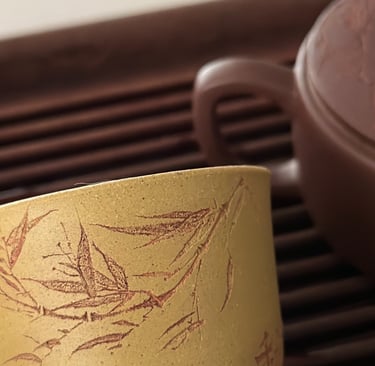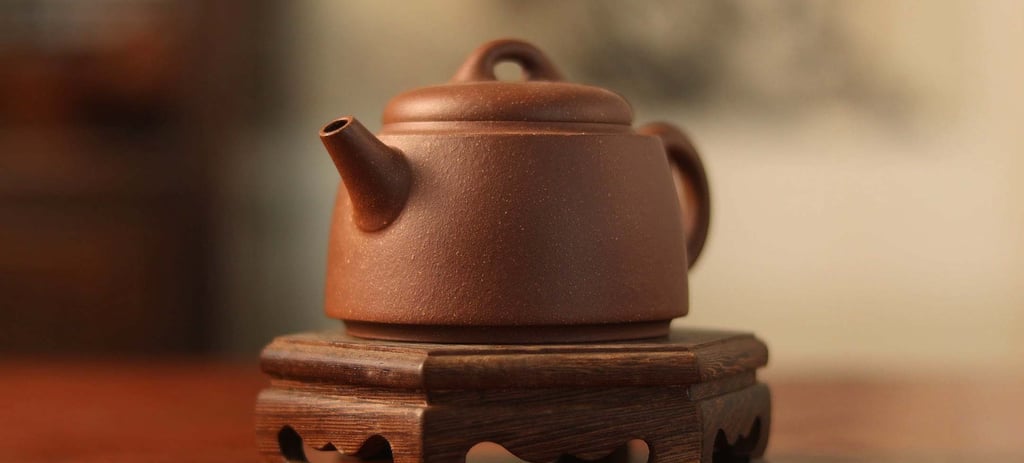How Can We Preserve and Grow Traditional Cultural Industries through Yixing Pottery
Yixing pottery demonstrates how traditional cultural industries can thrive by blending heritage with innovation. Through government support, modern design adaptations, and digital platforms, Yixing pottery has preserved its rich history while expanding its global presence, offering insights for revitalizing other traditional crafts.
YIXING TEAPOTS
Let’s be real: Can traditional crafts like Yixing pottery survive in today’s fast-paced, tech-driven world? How do we protect something so rooted in history while still making it relevant to modern consumers? And most importantly, can it actually grow and thrive, or are we just delaying the inevitable decline?
The good news? Yixing pottery isn’t just surviving—it’s thriving. And there’s a lot we can learn from its journey.
Preserving and Growing Traditional Cultural Industries through Yixing Pottery
Yixing Pottery: A Cultural Treasure
Yixing pottery isn’t just clay—it’s culture. Originating in the Northern Song Dynasty and hitting its peak during the Ming and Qing Dynasties, it’s more than just functional teaware. These pots are art, blending calligraphy, painting, sculpture, and poetry into something you can hold in your hands.
In 2006, Yixing pottery was officially recognised as part of China’s national cultural heritage, and for good reason. Generations of artisans have carried forward these traditions, ensuring the craft doesn’t fade into obscurity.
But let’s not romanticise it—keeping this legacy alive isn’t easy.
Challenges and Opportunities in Modernization
When China’s economy shifted towards market-driven reforms, a lot of traditional crafts struggled to keep up. Yixing pottery, however, found its footing.
Why? Because tea culture is booming, and nothing complements fine tea like an expertly crafted Yixing teapot.
The unique properties of Yixing clay, combined with intricate designs and unparalleled craftsmanship, make these pots irreplaceable. They're not just functional—they’re collectables, luxury items, and symbols of taste.
This growing demand has kept the industry alive, but it’s not just about demand—it’s about smart adaptation.


Government Support and Strategic Development
Let’s give credit where it’s due: government support has played a huge role in preserving and promoting Yixing pottery.
In 2006, it was recognised as a World Intangible Cultural Heritage, boosting its status worldwide. Events like the Ceramic Culture Arts Festival and platforms like China Ceramic City have given artisans visibility and market access.
It’s not just about protection—it’s about creating opportunities for growth. And that’s exactly what’s happening here.
Fusion of Tradition and Modernity
This is where things get really interesting. Yixing pottery isn’t stuck in the past—it’s evolving.
Modern artisans are blending traditional craftsmanship with contemporary design trends. They’re creating pots that resonate with younger audiences while still respecting centuries-old techniques.
Take the “Sailing Pot” designed for the 2008 Beijing Olympics—a perfect example of how Yixing pottery can stay relevant without losing its soul.
And let’s not ignore the power of e-commerce. Artisans are selling their work online, reaching customers far beyond traditional marketplaces. Brands like TeapotArtisan have brought Yixing pottery to a global audience.


Conclusion
Yixing pottery isn’t just surviving—it’s thriving. It’s a blueprint for how traditional industries can preserve their heritage while embracing modern opportunities.
With innovation, government backing, and a willingness to evolve, traditional crafts don’t just have to survive—they can grow, scale, and thrive.
The story of Yixing pottery proves one thing: tradition and progress aren’t enemies—they’re partners.
FAQs
1. Why is Yixing pottery so special?
Its unique clay, craftsmanship, and integration of art forms like calligraphy and sculpture make it irreplaceable in the world of ceramics.
2. How has Yixing pottery adapted to modern trends?
Through innovative designs, online sales platforms, and collaborations with contemporary events like the Beijing Olympics.
3. What role does the government play in preserving Yixing pottery?
Strong recognition, heritage status, and platforms like Ceramic Culture Arts Festival and China Ceramic City have been crucial.
4. Can other traditional crafts follow the same path?
Absolutely. The success of Yixing pottery proves that with the right mix of innovation, support, and adaptation, any traditional craft can thrive in today’s market.
